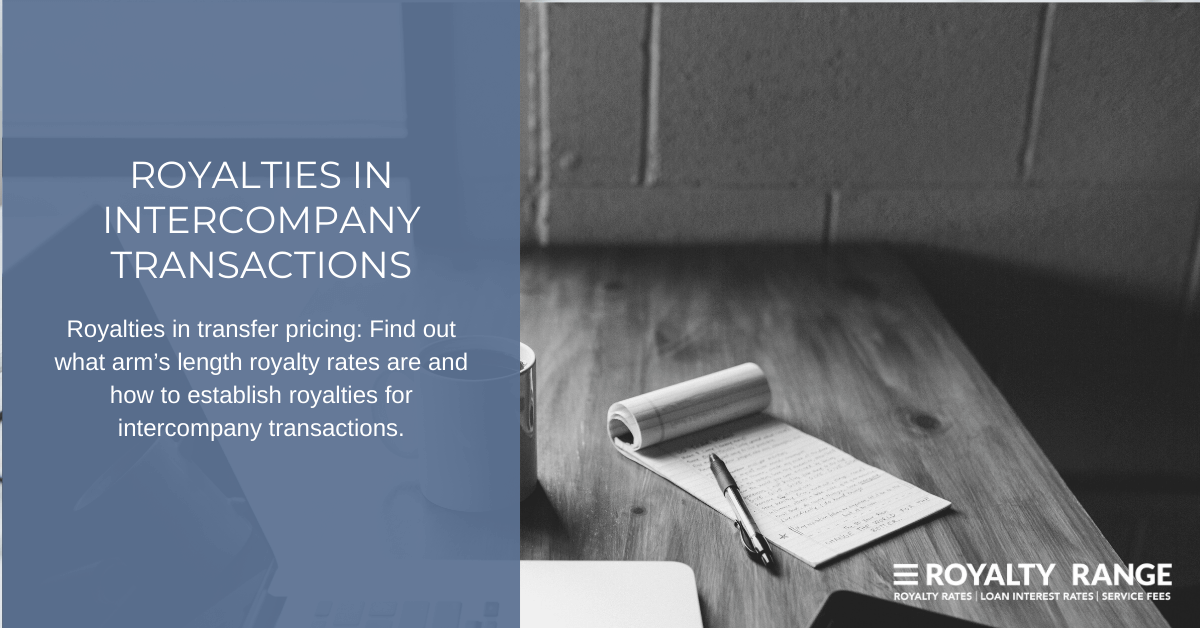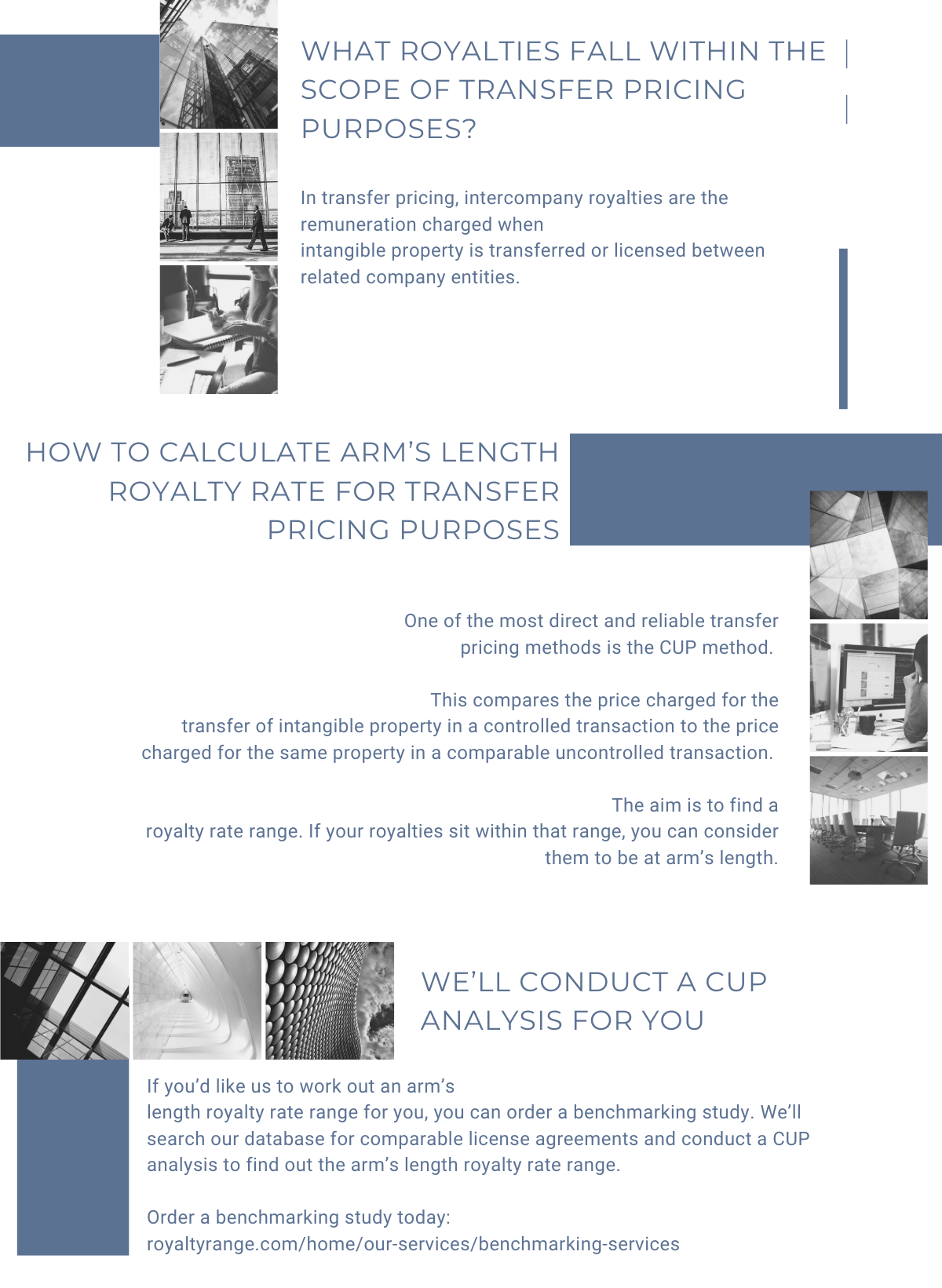Royalties in intercompany transactions
RoyaltyRange

Intercompany royalties are the remuneration charged when intangible property is transferred or licensed between related company entities. In this article, we’ll go into more detail about what royalties are, what requirements they need to meet for transfer pricing purposes, and how to set them.

Why are royalties important in transfer pricing?
In transfer pricing, royalties are payments that are charged when intangible property is transferred or licensed to a company subsidiary in a controlled intercompany transaction. For example, if an MNE transfers the rights to its patented technology designs to one of its subsidiary companies, which is a related legal entity of the MNE, then the MNE must apply an accurate transfer price for the transaction.
It is common for organizations to license intangible assets to their related company entities, particularly if there are dedicated manufacturing arms of the business. Intangible assets that may be granted include trademarks, trade names, software, technology and patents.
In order to meet tax regulations, the royalty rate needs to meet the arm’s length principle. This means the fee should be the same as if the intangibles had been licensed to an unrelated entity. Essentially, the royalty rate needs to reflect the going market rate for similar intellectual property.
Establishing arm’s length royalty rates
There are many reasons you might need to establish arm’s length royalties for transfer pricing purposes. You might be a transfer pricing professional who needs to work out whether your client set a market royalty rate when granting a license to their subsidiary. Or you may need to calculate an arm’s length royalty rate for an upcoming transfer of intangible property to another related entity.
To apply the arm’s length principle, you first need to identify all the details of the controlled transaction that you are analyzing. You need to determine the commercial and financial relations between the related parties to make sure the transaction is accurately outlined. You can read more about how to do this in Chapter 1 of the OECD’s 2017 Transfer Pricing Guidelines.
Once you have done that, you need to find comparable transactions between independent entities that you can use to identify an accurate market rate for your transaction. The easiest way to do this is to use the RoyaltyRange royalty rate database, as we take care of finding potentially comparable transactions for you. The conditions and economically relevant circumstances of the uncontrolled transactions must be suitably comparable with those of the controlled transaction being analyzed.
The comparability factors outlined by the OECD are as follows:
- The contractual terms of the transaction
- The functions performed by each entity, taking into account assets used and risks assumed
- The property or services being transferred
- The economic circumstances of the entities and the market they’re operating within
- The business strategies of each entity
You can find out more about the comparability analysis in Chapters 1–3 of the TP Guidelines.
The comparable uncontrolled price method
The next step is to choose the most suitable transfer pricing method to work out market range royalties. There are five main methods for establishing fair royalties in transfer pricing.
One of the most direct and reliable transfer pricing methods is the comparable uncontrolled price (CUP) method (also known as the comparable uncontrolled transaction (CUT) method). This method relies on access to recent, reliable license agreements between independent entities.
The CUP method compares the price charged for the transfer of intangible property in a controlled transaction to the price charged for the same property in a comparable uncontrolled transaction.
By analyzing comparable uncontrolled transactions, you will be able to find a royalty rate range. If your royalties sit within that range, you can consider them to be at arm’s length.
Do you want us to work out an arm’s length royalty rate range for you? Then you need a RoyaltyRange benchmarking study. We find the most relevant license agreements from our database (based on your search criteria), analyze them for comparability, and conduct a CUP analysis to calculate a royalty rate range that complies with the arm’s length principle. This saves you a huge amount of time and work – simply apply our findings to your transfer pricing analysis.
Find royalties for your transfer pricing analysis
To order a benchmarking study or request our One Search service to find comparable royalties and license agreements, simply fill in your details and search criteria using the boxes on the right.